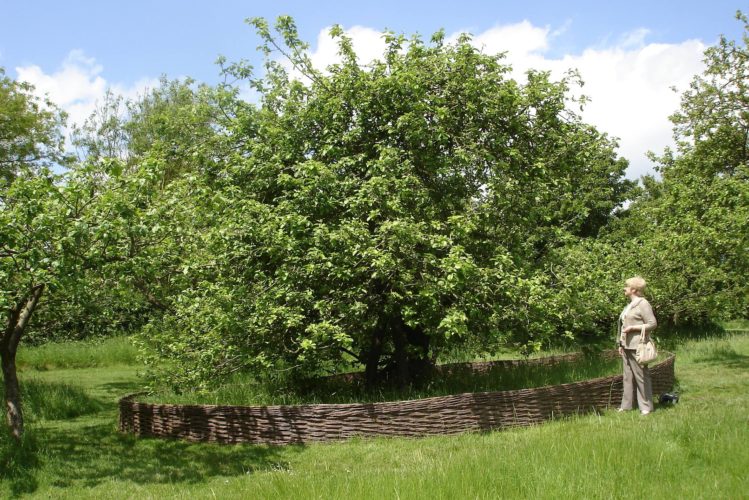Back in year 1666 Isaac Newton had to return to his family home from Cambridge University. The University had been closed due to the Great Plague of London which had killed estimated 100,000 people. In Woolsthorpe Manor, which was also his birthplace, Sir Isaac Newton performed multiple experiments with light and optics. He also relaxed in the garden, where he observed a falling apple, and started wondering why everything fell downwards, not sideways, or upwards. This led to the famous discovery of law of gravitation.
Contrary to some of the legends, the apple did not hit Newton’s head.

Newton’s apple tree blossoms and bears fruit
The Isaac Newton apple tree was planted over 400 years ago on Woolsthorpe grounds, and had its ups and downs. By downs, I mean especially this one time, when it fell down during a storm in 1820. By that time it had already been famous, and people harvested wood from the downed tree, to make souvenirs. Some fact sources claim it had died, but majority of sources agree that the apple tree remained rooted and re-grew again. Now, it is being cared for by UK’s National Trust (full name: National Trust for Places of Historic Interest or Natural Beauty). The tree is secured with a low fence, and attended by gardeners, who regularly prune it to keep it healthy. It still blossoms in spring and bears fruit!
It’s fascinating to think that, if it wasn’t for the terrible plague epidemic, and if the University wasn’t closed, the advancement in physics, and discovery of law of universal gravitation might have progressed in a totally different way.
Top image: Isaac Newton’s apple tree (Photo credit: Plucas58 / CC BY-SA 3.0)


